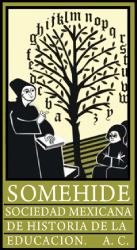Rafael Santamarina: A precursor of mental health in the elementary school of the 20th century
DOI:
https://doi.org/10.29351/amhe.v3i2.473Keywords:
Abnormal, school, mental health, SantamarinaAbstract
This research is situated in the post-revolutionary period of Mexico, within the framework of the promulgation of the Constitution of 1917 and the foundation of the Ministry of Public Education. At that time, the need to find out the mental and physical health conditions of Mexican children based on anthropometric charts was reconsidered. One of the professionals who participated in a relevant way in this process not only from its application but especially from the theoretical and methodological foundation was the physician Rafael Santamarina. Who was this man? What was his participation? What were his main contributions? This research will be oriented based on the aforementioned problematization. For this purpose, the recovery, review and analysis of primary hemerographic sources will be essential. It is mainly about the articles that the physician and university professor Santamarina wrote specially to collaborate in a periodical publication that had an important distribution at the national level: Educación. Revista Mensual, an academic project promoted and headed by teacher Lauro Aguirre and a team of professionals interested in educational issues whose main purposes were, on the one hand, to address all kinds of topics related to all levels of the national educational system at that time and, on the other, its diffusion among the members of the Mexican teaching profession. That is, to provide specialized information to in-service teachers to support their professional practice. This is particularly relevant if one takes into account that due to the armed process that had recently concluded in the country, there were many teachers in front of a group who did not have the opportunity to train as teachers in a teacher training school.
References
Colotla, V. (1984). Rafael Santamarina y los orígenes de la psicometría en México. Revista de Historia de la Psicología, 5(4), 101-189. https://www.revistahistoriapsicologia.es/archivo-all-issues/1984-vol-5-n%C3%BAm-4/
Meneses, J. (2013). Presentación. En J. Meneses (coord.), Psicometría (13-23). UOC. https://www.researchgate.net/profile/Julio-Meneses-2/publication/293121344_Psicometria/links/584a694408ae5038263d9532/Psicometria.pdf
Muñoz, J. F, Quintero, J., y Ancízar, R. (2014). Cómo desarrollar competencias investigas en educación. Nueva Editorial Iztaccíhuatl.
Santamarina, R. (1922a). Cómo debe hacerse en las escuelas el examen de los niños sospechosos de anormalidad mental. Educación. Revista Mensual, 1(3), 147-151.
Santamarina, R. (1922b). Papel de la higiene en una organización escolar moderna. Educación. Revista Mensual, 1(1), 41-45.
Santamarina, R. (1922c). Una escala para medir el desarrollo intelectual de nuestros niños. Educación. Revista Mensual, 1(4), 191-198.
Santamarina, R. (1923a). Higiene escolar desde el punto de vista de las actividades de los médicos escolares. Educación. Revista Mensual, 2(3), 156-164.
Santamarina, R. (1923b). Higiene escolar desde el punto de vista de las actividades de los médicos escolares. Concluye. Educación. Revista Mensual, 2(4), 202-208.
Downloads
Published
How to Cite
Issue
Section
License
Copyright (c) 2023 Raquel Díaz Galván

This work is licensed under a Creative Commons Attribution-NonCommercial 4.0 International License.
Todos los contenidos del Anuario Mexicano de Historia de la Educación se publican bajo una licencia Creative Commons Atribución No Comercial 4.0 Internacional (CC BY-NC 4.0), que permite compartir (copiar y redistribuir el material en cualquier medio o formato) y adaptar (remezclar, transformar y construir a partir del material) para fines no comerciales, dando los créditos a los autores y a la revista, tal como lo establece la licencia.
La política de acceso abierto y de licencias con “algunos derechos reservados” no niega la propiedad intelectual ni los derechos de los autores respecto a sus artículos, pues ellos son los titulares, en tanto que el Anuario Mexicano de Historia de la Educación no los reserva para sí ni para la institución editora, ya que se apegan a movimientos de acceso abierto como los Principios y Valores del Sistema de Información Científica Redalyc - Red de Revistas Científicas de América Latina y el Caribe, que pugnan por la eliminación de las políticas de embargo para que el autor retenga los derechos de su obra (principio número 8). Así como las políticas de acceso abierto del Directory of Open Access Journals (DOAJ).
Los autores podrán distribuir su propio material en cualquier otro medio o soporte, siempre y cuando sea para fines no comerciales, informando a los editores que el trabajo será publicado nuevamente y dando el crédito correspondiente al Anuario Mexicano de Historia de la Educación.
La publicación en el Anuario Mexicano de Historia de la Educación, por su carácter gratuito, no da derecho a remuneración económica alguna a los autores, ni a los dictaminadores.
Los lectores podrán reproducir (copiar), comunicar, distribuir o hacer obras derivadas de los artículos o colaboraciones publicados en el Anuario Mexicano de Historia de la Educación en los siguientes casos:
- Para fines públicos.
- Sin fines comerciales.
- Que se reconozca la autoría de la obra y se cite su origen con información completa: Apellido/s del autor, inicial/es del nombre/s. (año de publicación). Título del artículo. Nombre de la revista, volumen (número de ejemplar), página inicial del artículo-página final del artículo. DOI o URL (formato sugerido de acuerdo al estilo APA en su versión más reciente).
El cuerpo editorial del Anuario Mexicano de Historia de la Educación asumirá el compromiso de notificar oportunamente a los autores sobre cualquier cambio de ubicación de los artículos en el sitio (cambio de dirección URL o de conexiones para identificar el artículo).
Los autores, al enviar sus trabajos para su posible publicación, deberán tomar en cuenta los puntos anteriores, mismos que se contemplan en el Acuerdo entre autor y el Anuario Mexicano de Historia de la Educación.












